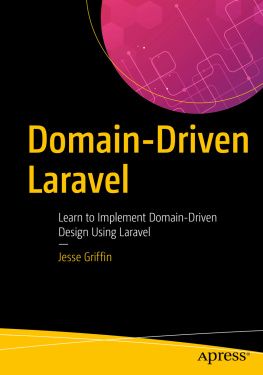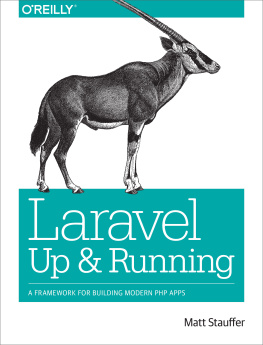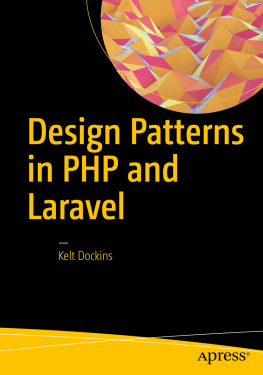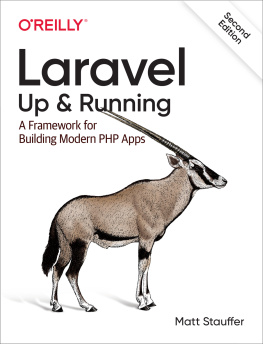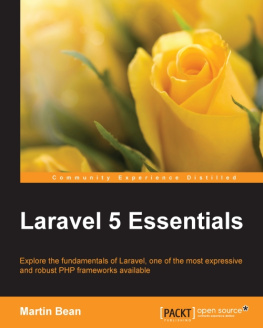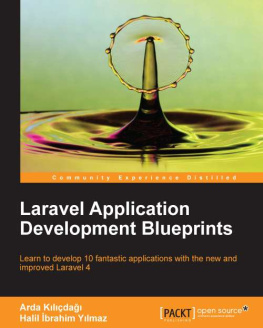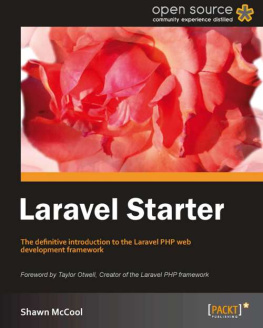Laravel (8x) PHP
Ideal programming book for anyone who wants to learn more about the implementation, practical use of laravel 8.x
By: David H. Thomas
You Will Must Be developing from Zero Knowles.
The book is full of great advice about how to write good code regardless of architecture or programming language..
This book covers everything you need to get started in application development with Laravel 8
Laravel Tutorial
aravel is a powerful MVC PHP framework, designed for developers who need a simple and elegant toolkit to create full-featured web applications. Laravel was created by Taylor Otwell. This is a brief tutorial that explains the basics of Laravel framework.
Audience
This tutorial will guide the developers and students who want to learn how to develop a website using Laravel. This tutorial is particularly meant for all those developers who have no prior experience of using Laravel.
Prerequisites
Before you start proceeding with this tutorial, we assume that you are familiar with HTML, Core PHP, and Advance PHP. If you are new to any of these concepts, we suggest you to pick tutorials based on these concepts first, to gain a better understanding of Laravel.
Please note that we have used Laravel version 5.7 in all the examples.
Laravel Overview
Laravel is an open-source PHP framework, which is robust and easy to understand. It follows a model-view-controller design pattern. Laravel reuses the existing components of different frameworks which helps in creating a web application. The web application thus designed is more structured and pragmatic.
Laravel offers a rich set of functionalities which incorporates the basic features of PHP frameworks like CodeIgniter, Yii and other programming languages like Ruby on Rails. Laravel has a very rich set of features which will boost the speed of web development.
If you are familiar with Core PHP and Advanced PHP, Laravel will make your task easier. It saves a lot time if you are planning to develop a website from scratch. Moreover, a website built in Laravel is secure and prevents several web attacks.
Advantages of Laravel
Laravel offers you the following advantages, when you are designing a web application based on it
The web application becomes more scalable, owing to the Laravel framework.
Considerable time is saved in designing the web application, since Laravel reuses the components from other framework in developing web application.
It includes namespaces and interfaces, thus helps to organize and manage resources.
Composer
Composer is a tool which includes all the dependencies and libraries. It allows a user to create a project with respect to the mentioned framework (for example, those used in Laravel installation). Third party libraries can be installed easily with help of composer.
All the dependencies are noted in composer.json file which is placed in the source folder.
Artisan
Command line interface used in Laravel is called Artisan. It includes a set of commands which assists in building a web application. These commands are incorporated from Symphony framework, resulting in add-on features in Laravel 5.1 (latest version of Laravel).
Features of Laravel
Laravel offers the following key features which makes it an ideal choice for designing web applications
Modularity
Laravel provides 20 built in libraries and modules which helps in enhancement of the application. Every module is integrated with Composer dependency manager which eases updates.
Testability
Laravel includes features and helpers which helps in testing through various test cases. This feature helps in maintaining the code as per the requirements.
Routing
Laravel provides a flexible approach to the user to define routes in the web application. Routing helps to scale the application in a better way and increases its performance.
Configuration Management
A web application designed in Laravel will be running on different environments, which means that there will be a constant change in its configuration. Laravel provides a consistent approach to handle the configuration in an efficient way.
Query Builder and ORM
Laravel incorporates a query builder which helps in querying databases using various simple chain methods. It provides ORM (Object Relational Mapper) and ActiveRecord implementation called Eloquent.
Schema Builder
Schema Builder maintains the database definitions and schema in PHP code. It also maintains a track of changes with respect to database migrations.
Template Engine
Laravel uses the Blade Template engine, a lightweight template language used to design hierarchical blocks and layouts with predefined blocks that include dynamic content.
E-mail
Laravel includes a mail class which helps in sending mail with rich content and attachments from the web application.
Authentication
User authentication is a common feature in web applications. Laravel eases designing authentication as it includes features such as register, forgot password and send password reminders.
Redis
Laravel uses Redis to connect to an existing session and general-purpose cache. Redis interacts with session directly.
Queues
Laravel includes queue services like emailing large number of users or a specified Cron job. These queues help in completing tasks in an easier manner without waiting for the previous task to be completed.
Event and Command Bus
Laravel 5.1 includes Command Bus which helps in executing commands and dispatch events in a simple way. The commands in Laravel act as per the applications lifecycle.
Laravel Installation
For managing dependencies, Laravel uses composer. Make sure you have a Composer installed on your system before you install Laravel. In this chapter, you will see the installation process of Laravel.
You will have to follow the steps given below for installing Laravel onto your system
Step 1 Visit the following URL and download composer to install it on your system.
https://getcomposer.org/download/
Step 2 After the Composer is installed, check the installation by typing the Composer command in the command prompt as shown in the following screenshot.
Step 3 Create a new directory anywhere in your system for your new Laravel project. After that, move to path where you have created the new directory and type the following command there to install Laravel.


